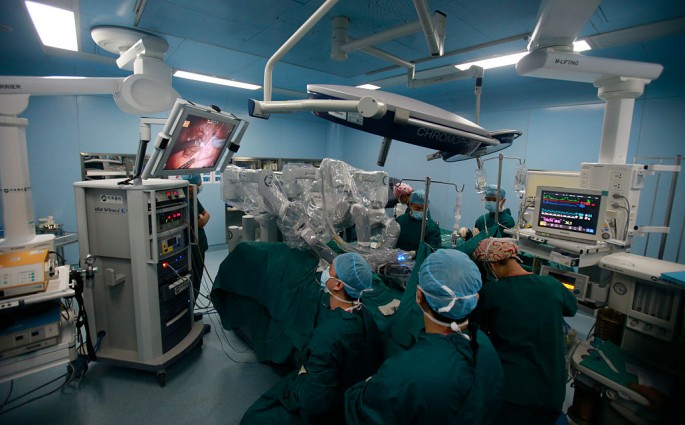In a report by the China Daily, a 43-year-old patient in dire need of surgery was suffering from a deformity in his upper cervical vertebrae. He needed an implanted screw to support his neckbone, but no hospital would undertake the risky surgery.
Surgeon Tian Wei was facing one of the most challenging operations in his 30-year career yet. The patient’s case was eventually taken on by Beijing Jishuitan Hospital, where Tian Wei is the President.
The operation went smoothly, completed in an hour with the help of Phecda--a surgery robot with a high-definition 3D visual system that can help in guiding medical tools to the proper location within the internal orthopedic structure.
“It’s the world’s first robot-assisted surgery on the upper cervical vertebrae,” said Tian. “Phecda is more precise than foreign products and the cost is lower.”
Outclassing Foreign Rivals, Expecting Sizable Demand
Phecda is just one of many medical robots developed by Beijing Tinavi Medical Technology Co, in collaboration with Jishuitan Hospital. It is part of an effort by China to compete with foreign rivals making medical robots.
The model is the third-generation surgery robot created by Tinavi and is set for mass commercialization this year after approval from the China Food and Drug Administration in July.
Moreover, medical robots are one of the key highlights of the country’s Made in China 2025 Strategy, a broader effort to promote and improve high-end manufacturing.
The industry is expecting strong demand and policy support for such medical products. By 2050, more than 400 million Chinese will be over 60 years old, comprising over 30 percent of the population, according to the China Daily report.
"The growing number of senior citizens will offer a sizable quantity of clinical cases, and enterprises can leverage a huge database to accelerate research and development," said Zhang Songgen, Tinavi Chairman.



























